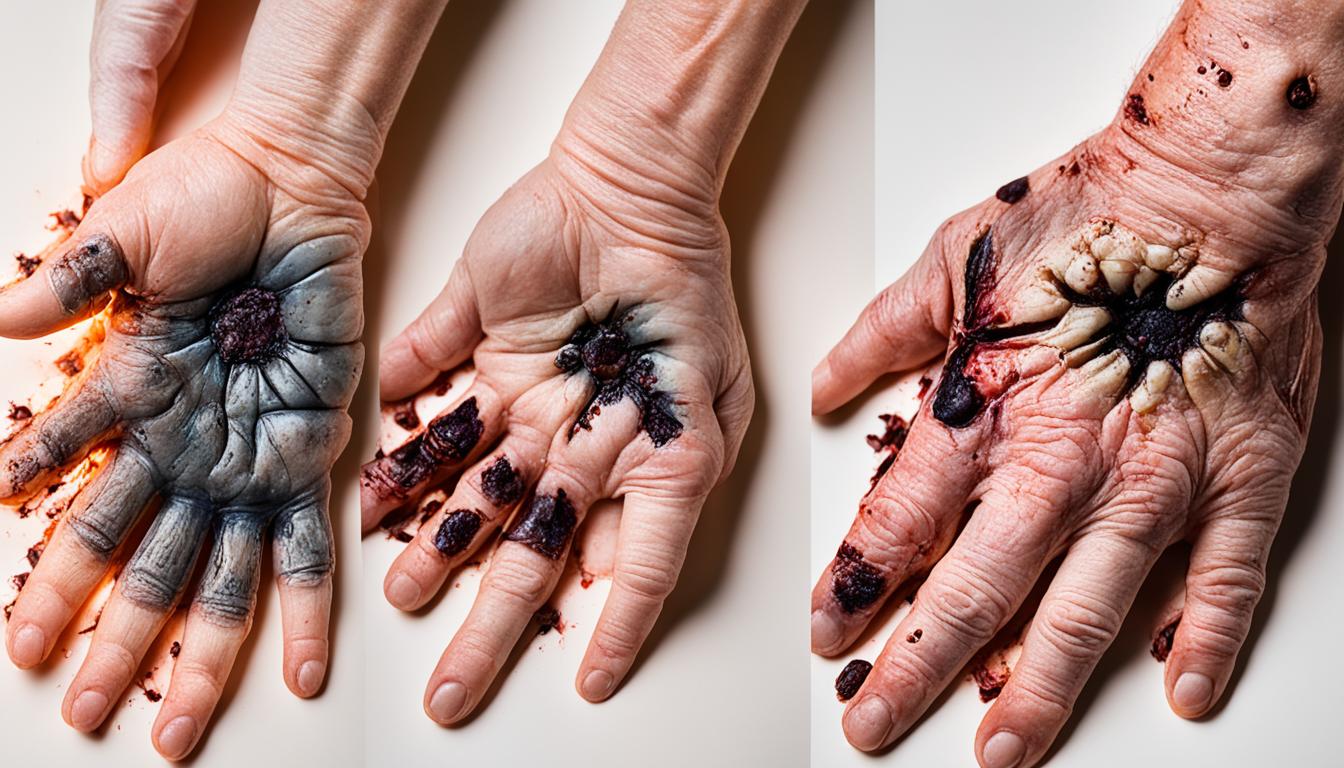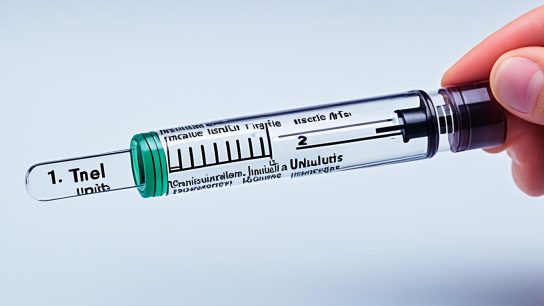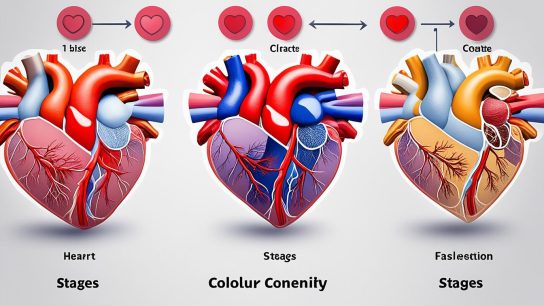Are you wondering how long it takes for a burn to heal? The healing time for burns can vary depending on the severity of the burn and the treatment received. In this article, we will provide quick tips on burn healing time and the recovery period for burns.
Treatment for Burns that Don’t Need Medical Attention
Mild burns or scalds that only affect the superficial layers of the skin can usually be treated at home without the need for medical attention. Home treatment for minor burns is generally effective in promoting healing and relieving discomfort.
Here are some first aid tips for treating minor burns and scalds:
- Immediately hold the burned area under cool running water for at least 10 minutes to help reduce pain and prevent further injury. Avoid using ice, as it can damage the skin.
- Gently pat the burn dry with a clean, soft cloth or towel.
- Avoid applying creams, lotions, or greasy substances to the burn, as they can trap heat and slow down the healing process.
- Do not burst any blisters that may have formed, as this can increase the risk of infection.
- If the burn is on the mouth, avoid irritants such as hot and spicy food, alcohol, and smoking, as they can exacerbate the discomfort.
- Keep the burn clean and dry to prevent infection. Use a mild soap to gently cleanse the area, and pat it dry with a clean towel.
- Cover the burn with a non-stick sterile dressing or a clean cloth bandage to protect it from dirt and further injury.
With proper care, these minor burns typically heal within about a week without leaving any permanent scarring. If the burn worsens, shows signs of infection, or does not improve after a week, it is important to seek medical attention.
| Treatment for Minor Burns: | Do’s | Don’ts |
|---|---|---|
| Cool the burn under running water | Gently pat dry | Avoid using ice |
| Cover with non-stick sterile dressing | Keep the burn clean | Do not burst blisters |
| Use mild soap for cleansing | Avoid applying creams or greasy substances | Avoid irritants for mouth burns |
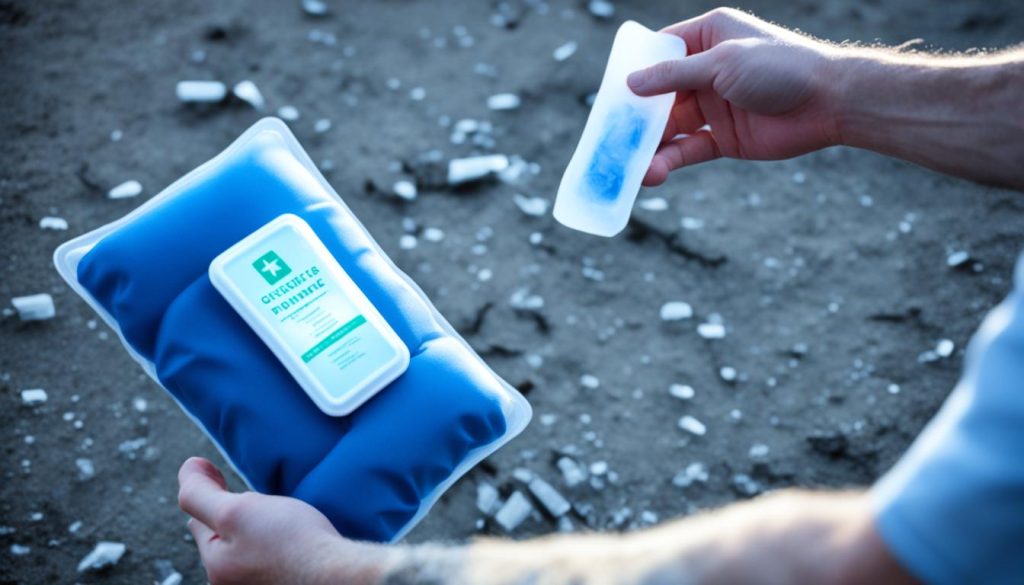
Treatment for Burns that Need Medical Attention
If a burn or scald requires medical attention, it will be assessed by a healthcare professional to determine the level of care needed. This may involve cleaning the burn, covering it with a sterile dressing, and offering pain relief if necessary. In more severe cases, a specialist burn care service may be required. Surgery may also be necessary to remove the burnt skin and replace it with a skin graft from another part of the body. These more serious burns can take longer to heal, often leaving visible scarring.

| Treatment Options for Burns | Severity | Procedure |
|---|---|---|
| Medical Treatment | Moderate Burns | Assessment by a healthcare professional, cleaning the burn, sterile dressing, pain relief |
| Severe Burns | Specialist burn care, surgery, skin graft |
Severe burns require specialized medical treatment to promote healing and minimize complications. The expertise of a burn care specialist is often necessary in managing these cases. The primary goal of treatment is to remove dead tissue, prevent infection, and promote skin regeneration. Surgery may be performed to excise the burned tissue and improve the appearance of the affected area. Skin grafting is a common procedure where healthy skin is taken from a donor site and transplanted onto the burned area to aid in the healing process.
In addition to surgical interventions, other supportive measures such as physical therapy, nutritional support, and pain management may be provided to enhance recovery. The overall treatment plan is tailored to the individual needs of the patient, taking into account the extent and severity of the burn, as well as any underlying medical conditions.
For severe burns, the healing process can be lengthy and may involve multiple surgical procedures. It is important for patients to follow their healthcare provider’s instructions for proper wound care, medication management, and follow-up appointments. Physical and emotional support during this challenging time is crucial, and burn care centers often provide comprehensive multidisciplinary care to address the various aspects of recovery.
Treatment for Blisters Caused by Burns
Expert opinions vary on the management of burn blisters, but it is generally recommended not to burst them yourself. If a burn has caused a blister, it is important to seek medical attention. Healthcare professionals may choose to deroof the blister by removing the top layer of skin or aspirate the fluid from larger or likely-to-burst blisters. The best way to care for a blister and the type of dressing to use should be advised by a healthcare professional.
In some cases, deroofing blisters is considered the appropriate treatment option.
This procedure involves carefully removing the top layer of skin, allowing the underlying skin to heal. Deroofing can help prevent infection and promote faster healing. It is important to note that this procedure should only be performed by a healthcare professional in a sterile environment to minimize the risk of infection.
Aspiration of blisters is another management technique used for larger blisters or blisters that are at risk of bursting. During an aspiration procedure, a needle is used to puncture the blister and drain the fluid. This can relieve pain and potentially prevent infection. Again, it is crucial to have this procedure performed by a healthcare professional to ensure proper technique and reduce the risk of complications.
When it comes to dressing the blister, healthcare professionals may recommend using a non-stick dressing to cover the area. This helps protect the blister from further irritation and infection. Regularly changing the dressing and keeping the wound clean are essential for proper healing. It is important to follow the advice and instructions of a healthcare professional regarding dressing changes and wound care.
Overall, the management of burn blisters should be approached on an individual basis, taking into consideration the specific characteristics of the burn and the blister. Seeking medical attention and guidance from a healthcare professional is crucial to ensure appropriate treatment and prevent complications.
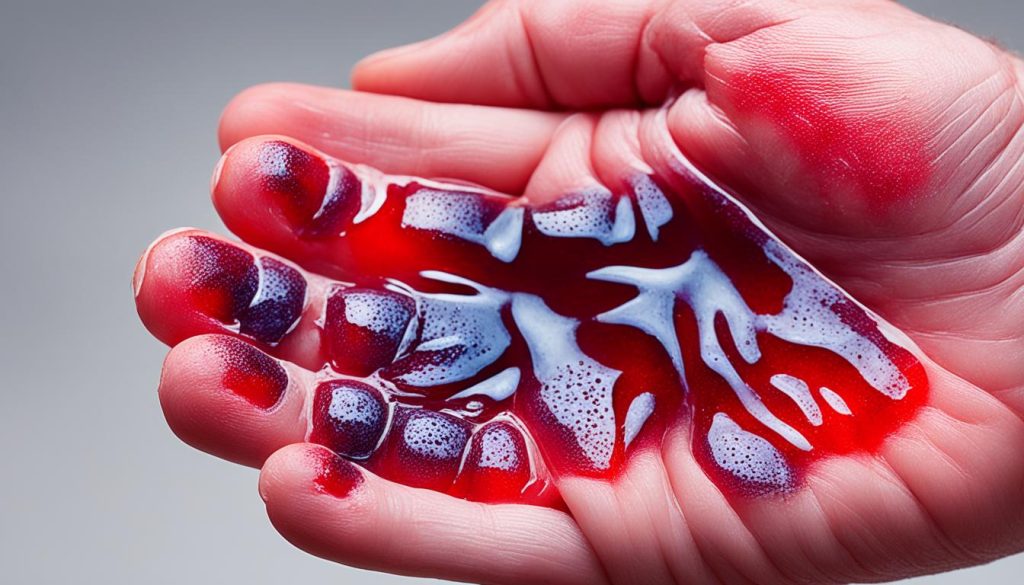
Sun Exposure and How Long Does It Take for a Burn to Heal?
After a burn, it is crucial to protect the affected area from direct sunlight during the initial stages of healing. Sun exposure can cause further damage, increase the risk of blistering, and delay the recovery process.
The damaged skin is especially sensitive during the first year after the injury, including areas that have undergone skin grafting. To shield the burn from harmful UV rays, it is recommended to cover the area with lightweight, breathable cotton clothing.
If the burn is on the face, wearing a hat with a wide brim can provide additional protection. This helps to minimize sun exposure and prevent any potential complications that may arise from sunlight exposure.
Furthermore, applying sunblock specifically designed for burns is essential. Look for a sunblock with a high sun protection factor (SPF) to ensure optimal protection. Choose a broad-spectrum formula that protects against both UVA and UVB rays.
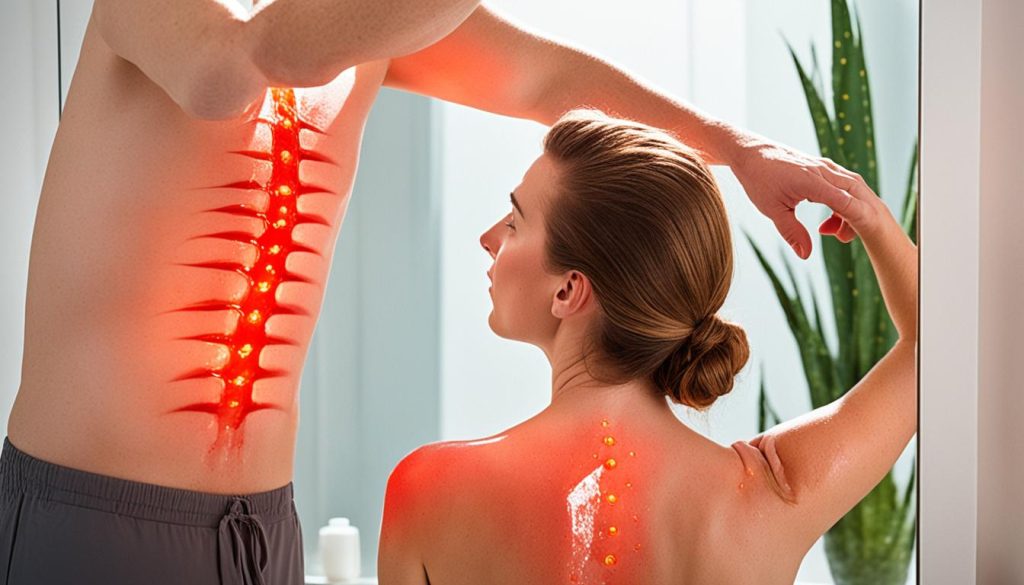
During the first two years of healing, it is essential to continue using a high-factor sun cream (SPF 30 or above) even when the affected area can tolerate sunlight exposure. It is preferable to avoid direct sunlight during peak hours, especially between 10 am and 4 pm, when the sun’s rays are the strongest.
Note: It is important to consult with a healthcare professional for specific recommendations on sun protection based on the severity and location of the burn.
The Importance of Protecting Burns from Sunlight
Exposing a burn to direct sunlight can have detrimental effects on the healing process. Here are some reasons why protecting a burn from sunlight is crucial:
- Prevents Further Damage: Sun exposure can cause the burn to worsen, leading to prolonged healing time and potential complications.
- Reduces Blistering: Sunburned skin is more susceptible to blistering. Protecting the burn from sunlight minimizes the risk of blister formation.
- Promotes Scar Prevention: Proper sun protection helps prevent excessive scar formation, especially in areas that have undergone skin grafting.
- Aids in Pain Management: Sunburned skin can be incredibly painful. Shielding the burn from sunlight reduces pain and discomfort during the healing process.
By following these sun protection measures, individuals can support the healing process and minimize the risk of complications.
| Sun Protection Tips for Burns |
|---|
| Cover the burn with lightweight cotton clothing |
| Wear a hat with a wide brim to shield the face |
| Apply sunblock with a high SPF on all affected areas |
| Avoid direct sunlight, especially during peak hours |
| Continue using high-factor sun cream even after two years |
When to Seek Further Medical Advice?
If you have suffered a burn, it is important to know when to seek further medical advice. While minor burns can often be treated at home with proper care, there are certain signs that indicate the need for medical attention. These signs include:
- Pain or foul smell: If your burn becomes increasingly painful or emits a foul odor, it may be a sign of infection or complications.
- High temperature: If your body temperature rises to 38°C (100.4°F) or higher, it could indicate an infection.
- Excessive fluid leakage: If the dressing on your burn becomes soaked with fluid leaking from the wound, it may be a sign of infection or poor healing.
- Delayed healing: If your burn hasn’t shown significant signs of healing after two weeks, it is recommended to seek medical advice.
If you notice any of these signs, it is important to consult with a healthcare professional. You can reach out to your general practitioner or contact a medical helpline like NHS 111 for further evaluation and guidance.
Knowing when to seek medical advice for burns is crucial to ensure proper treatment and prevent complications. It’s always better to be safe than sorry when it comes to your health and well-being.
Home Care for Burns
Proper home care is crucial in promoting healing and preventing infection in burns. By following these care instructions, you can play an active role in your burn recovery process.
1. Wash the Burn Gently
Start by washing the burn daily with mild soap and water. Use your hands or a gentle cloth to clean the area, ensuring that you do not rub or scrub the burn. Pat it dry with a clean towel or let it air dry.
2. Apply Antibiotic Ointment or Petroleum Jelly
After drying the burn, apply a thin layer of antibiotic ointment or petroleum jelly. This will help keep the burn moisturized and create a barrier against bacteria. Remember not to use too much ointment or jelly, as it may slow down the healing process.
3. Cover the Burn
Protect the burn by covering it with a non-stick bandage. This will prevent dirt and bacteria from coming into contact with the burn. Ensure that the bandage is not too tight but snug enough to secure the dressing in place.
4. Protect the Burn from Further Injury
Depending on the location of the burn, consider wearing long sleeves, pants, or a hat to shield the affected area from the elements. This can help prevent additional trauma and promote faster healing.
5. Avoid Breaking Blisters
As tempting as it may be, do not burst any blisters that form on the burn. Blisters act as a protective barrier and bursting them could increase the risk of infection.
6. Take Prescribed Medications
If your healthcare professional has prescribed antibiotics or other medications, make sure to take them as directed. These medications are essential in preventing and treating infection.
7. Manage Pain and Itching
If you experience pain, over-the-counter pain medications, such as acetaminophen or ibuprofen, can help alleviate discomfort. If the burn itches, avoid scratching and consider trying over-the-counter antihistamines to relieve the itchiness.
If the burn is not healing, becomes more painful, or shows signs of infection, it is important to seek medical attention. Your healthcare provider can assess the burn and provide appropriate treatment.
Conclusion
The healing process for burns can vary depending on factors such as the severity of the burn, the type of medical treatment received, and proper wound care. Minor burns usually heal within a week without leaving any scars, while more severe burns may take months or even years to fully recover and can result in visible scarring.
It is important to avoid bursting any blisters that may form as a result of a burn, as this can introduce the risk of infection. Additionally, protecting the burn from direct sunlight during the healing process is crucial to prevent further damage and blistering. Wearing protective clothing and using a high-factor sun cream can help protect the healing skin.
If there are signs of infection or complications, seeking further medical advice is essential. By following proper home care instructions and seeking appropriate medical treatment, the burn healing process can be expedited. Prompt treatment, diligent wound care, and avoiding factors that can hinder healing are key in ensuring a successful recovery.

